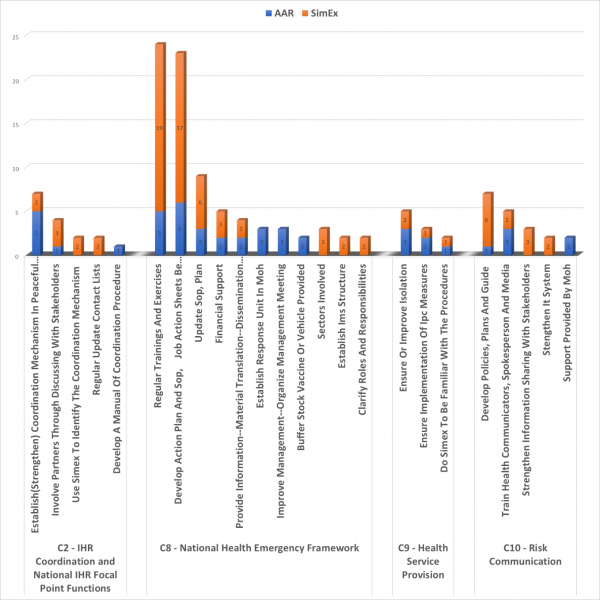
Simulation Exercise & After-Action Review Analysis Shows Need to Increase Awareness of Benefits
July 5, 2019
This month, WHO has developed unique analysis showing important trends and insights into the implementation of Simulation Exercises and After-Action Reviews; two components of the International Health Regulation (2005) Monitoring & Evaluation Framework. Since 2016, 101 SimEx and 50 AAR have been conducted by Member States with support from WHO. Among other findings, the analysis shows that Simulation Exercises (SimEx) and After Action Reviews (AAR) are conducted unevenly across the 6 WHO regions, and that awareness of their benefits for evaluating and strengthening IHR capacities needs to be increased.
Eighty-two available reports (30 AAR and 52 SimEx) submitted by Member States between 2016 to January 2019, were analyzed in order to identify common experiences and to help address gaps. WHO’s Weekly Epidemiological Record published partial results of this analysis in its special issue that was released during the 2019 World Health Assembly.
When grouping and matching specific functions against the 13 IHR capacities, as per the State Party self-assessment Annual Reporting (SPAR) Tool, it was found that all capacities were reviewed/tested at least once. The analysis also found that Communication, IHR Coordination and National IHR Focal Point Functions, Health Service Provision, and National Health Emergency Framework are the most frequently assessed capacities and that public health outbreaks (biological agents) were the most commonly reviewed or simulated event.
Although recommendations have been proposed clearly in all AAR and SimEx reports, it is unclear the degree to which recommendations have been implemented and how much they have improved emergency response capacities. Post-AAR and SimEx follow-up – including documentation of success – is recommended to validate if expected or assumed improvements were made.
Limitations of the analysis include the challenge of there being only a limited number of reports available, due to the voluntary nature of these IHR-MEF instruments, and inconsistencies in the structure, format, methodology and availability of key information.
WHO recently published the Country Implementation Guidance for AAR and SimEx under the IHR-MEF which provides strategic guidance and introduces standardized minimum reporting. This will improve the ability to analyze findings and draw better conclusions on Member States’ preparedness and IHR capacities in the future.
Figure 1. Recommendations for top 3 tested IHR capacities in AAR and SimEx between 2016 to January 2019

For further information see: